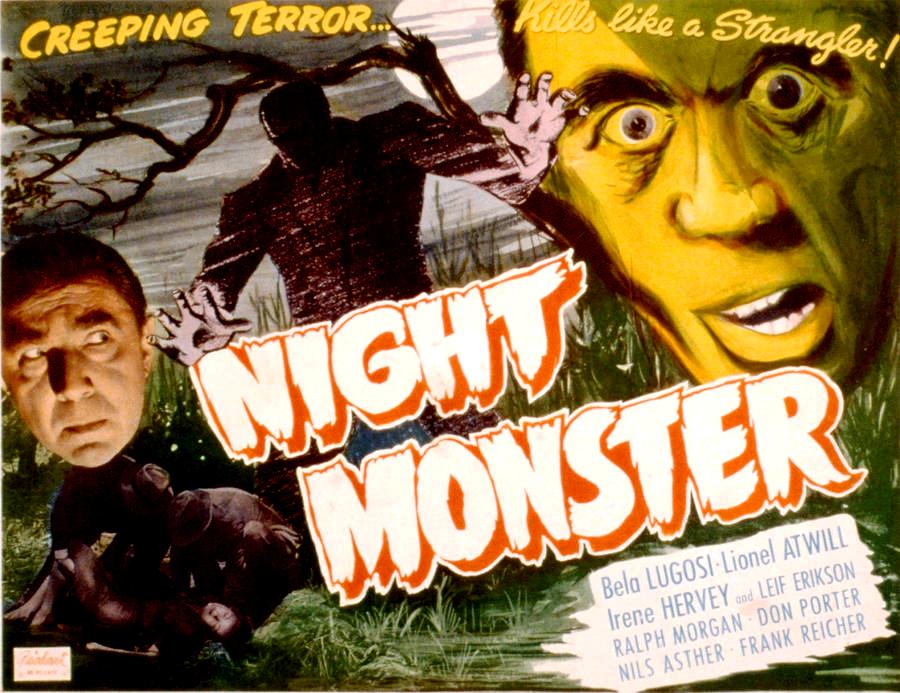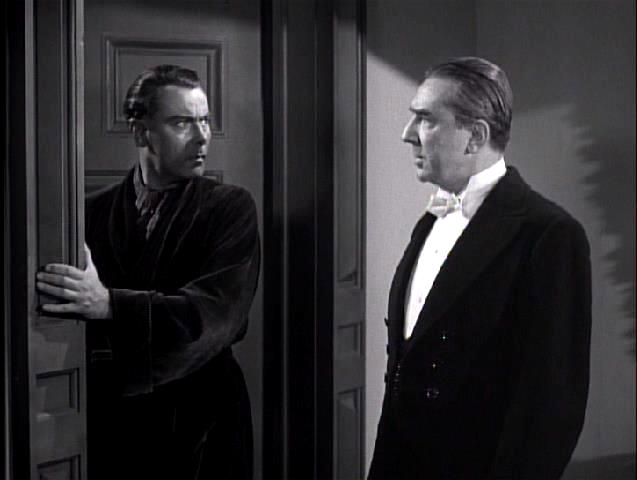 This particular type of movie was the result of three years of disastrous attempts of “New Universal” to distance itself from Universal as it had been under the Laemmle family. In 1936, the perpetually strapped Laemmles borrowed money from Standard Capital with the studio as the potential prize. One box-office flop in particular, Sutter’s Gold, helped ensure the loss of the studio to Standard Capital, who happily took over and (briefly) renamed themselves the “New Universal” — this is where the lucite globe with its fanfare and twirling stars replaced the old “airplane circling the globe” logo. The first thing to go were horror pictures. This dovetailed with the unofficial moratorium on horror that had come about from pressure groups appalled at the “excesses” of the 1930s horror pictures — and it suited the new head of production, Charles Rogers, just fine because he hated horror movies.
This particular type of movie was the result of three years of disastrous attempts of “New Universal” to distance itself from Universal as it had been under the Laemmle family. In 1936, the perpetually strapped Laemmles borrowed money from Standard Capital with the studio as the potential prize. One box-office flop in particular, Sutter’s Gold, helped ensure the loss of the studio to Standard Capital, who happily took over and (briefly) renamed themselves the “New Universal” — this is where the lucite globe with its fanfare and twirling stars replaced the old “airplane circling the globe” logo. The first thing to go were horror pictures. This dovetailed with the unofficial moratorium on horror that had come about from pressure groups appalled at the “excesses” of the 1930s horror pictures — and it suited the new head of production, Charles Rogers, just fine because he hated horror movies.
Well, a couple years of no horror movies turned out to be financially disastrous, and when a re-issue of Dracula (1931) and Frankenstein (1931) proved immensely successful with audiences starved for horror, New Universal decided to revive the genre with Son of Frankenstein (1939) — a lengthy, expensive production that, despite being a bit on the dull side, proved a big hit. The resut — studio execs considered that it might be possible to make even bigger profits with more streamlined — assembly-line — horrors, especially since they believed the audiences for this sort of thing were none too choosy. (They were — at least in-house — very upfront that they viewed their audience as kids, the lower classes, and blacks.) Economical movies like Black Friday (1940) and The Mummy’s Hand (1940) proved the market was there, and soon Universal’s so-called “Silver Age” was in full swing. (The Mummy’s Hand was especially economical because it allowed Universal to recycle temple sets from James Whale’s massive turkey Green Hell — who cared if the gods depicted were Aztec rather than Egyptian?) That they had “special” contracts (not in any way favorable to the actors) with performers like Bela Lugosi made it that much easier.
Where Night Monster errs with horror fans lies in the casting — and the use of those “special” contracts. It stars Bela Lugosi and Lionel Atwill — in fact, it’s the only Universal horror other than Dracula where Lugosi received top billing — and yet it gives neither one much to do. Atwill has very little screen time as the first of the doctors to be murdered. At least, Lugosi gets a fair amount of screen time as the butler — and a few choice lines — but he really doesn’t do anything other than stand around and be Lugosi. That might matter less if it weren’t for the fact that there’s the smaller — in terms of screen time and number of lines — but juicier role of Agor Singh, an Eastern mystic, which is given to Nils Asther. Nothing against Asther, but Lugosi would have made the role into an indelible creation and it’s hard to watch the film without being aware of that. But if you can get past this, Night Monster is one of Universal’s best 1940s horror pictures.






I remember seeing this on TV alone when I was 11 or so, with a fully-charged imagination. Somehow, with the b/w photography, the rumpled clothing of the corpses made them look to me as if the killer had eviscerated its victims, almost as if they had been turned inside out. The movie scared the hell out of me. Then again, it didn’t take much.